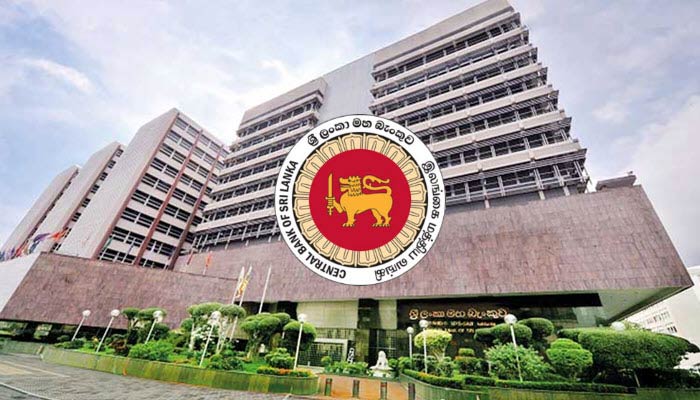Business
Lankan ports need investment and China steps in

By Rathindra Kuruwita
Despite innumerable warnings from the U.S. and its allies that China is the root of Sri Lanka’s economic woes, and that Chinese infrastructure development projects create security dilemmas for India, Colombo went ahead recently to sign an agreement with a China Merchants Port Holdings (CMPH)-led consortium to build a $392 million South Asia Commercial and Logistics Hub (SACL) at the Colombo port.
This project is said to be South Asia’s largest port-related logistics complex. A press release to mark the agreement said that the project “aligns with Sri Lanka’s national development strategy to transform the country into a major logistics center, identified as a key sector and a driving force for economic development in the National Policy Framework (NPF) 2019.”
Sri Lanka Ports Authority (SLPA) and private sector firm Access Engineering each hold 15 percent stakes in the project as well. The logistics hub is an eight-story, 5 million square foot facility with a storage capacity of 530,000 cubic meters (CBM). The construction of the facility is likely to commence in the second half of this year and be completed by the end of 2025.
The SACL is situated next to the Port City, also funded by the Chinese and the CBD Business Centre. It will also be linked to the Bandaranaike International Airport by the Port Access Elevated Highway.
“The five million square foot complex will offer the full gamut of logistics-related facilities and services such as Less than Container Load (LCL), Multi-Country Consolidation (MCC), Container Freight Station (CFS), General warehousing and various other value-added services,” the press release said.
The establishment of the center will improve the Port’s logistic and warehousing facilities and services, thereby boosting its competitiveness and reinforcing its position as a hub.
Sri Lanka aspires to be a regional logistics hub and over the past few decades, successive governments and private sector partners have poured billions of dollars into its ports. However, despite Sri Lanka’s lofty ambitions, its ports lag behind many countries and significant investments are needed to make it competitive.
In April, the World Bank released its Logistics Performance Index (LPI) and Sri Lanka scored an overall LPI score of 2.8. India had a score of 3.4. Sri Lanka also had a Logistics competence and quality score of 2.7 and an Infrastructure score of 2.4. Sri Lankan scores were similar to Rwanda and Solomon Islands and even Namibia has a better overall score.
Sri Lanka’s Sunday Times noted that the country’s port facilities are “nowhere near the top 10 high-caliber performers in world trade logistics services, although a parade of national leaders is continuing to peddle the myth of a global or even regional logistics hub, cargo hub, shipping hub and the like.”
In the World Bank’s Container Terminal Performance Index-2021, Colombo was placed 24th, higher than Jawaharlal Nehru Port (54) and Chennai (79) in India.In the past few decades, a port’s commercial success stems from a productivity advantage in conventional cargo-handling services, the value-added services it offers, or a blend of both.
Thus, the most productive ports are the ones that can handle large volumes of cargo and/or significantly reduce unit costs through efficient management and customers view value-added logistics services as an integral part of the supply chain. Given this trend, it is also obvious that in the future only the ports that have advantages in productivity and value-added service will prosper, while the ports that cannot will fall by the wayside. Therefore, Sri Lanka needs significant investments in its ports to ensure that they remain competitive and emerge as logistics hubs.
However, commercial viability is not the only reality in which Sri Lanka operates. Sri Lankan geopolitical analyst Asanga Abeyagoonasekera, who is a senior fellow at The Millennium Project, told The Diplomat that while the Chinese investments make sense in a commercial sense, they often draw the ire of the U.S. and India because Sri Lanka does not communicate its intent.
Indian journalists obviously see the SLCL as an example of China tightening its grip on Sri Lanka. As noted in a previous post, such reporting feeds into the narrative that China can use its port infrastructure in Sri Lanka and other South Asian nations for military use and that this poses a grave national security threat to India.
Sri Lanka’s strategy for addressing Indian concerns has involved giving Indian companies large-scale projects to counterbalance Chinese-funded ones. However, the Indian projects in Sri Lanka, almost all involving the Adani Group, are not adequate to meet Sri Lanka’s infrastructure investment needs.
Enjoying this article? Click here to subscribe for full access. Just $5 a month.The World Bank and the IMF have been moving away from infrastructure development for decades. Therefore, despite what their ideological beliefs are, Sri Lankan leaders ultimately end up turning to China for investments.
China was closed for almost three years due to their zero-covid policy and since lifting restrictions, Chinese companies, state-affiliated and private, have been traveling across the world for new business opportunities.
In recent months several such delegations have arrived in Sri Lanka and Chinese investments will probably spike leading to mass hysteria in Indian media. It is up to Sri Lanka to ensure that India and the U.S. understand that these investments are indeed commercial in nature.
Business
Relief measures to assist affected Small and Medium Enterprises

As agreed with the Sri Lanka Banks’ Association (Guarantee) Ltd. (SLBA), to provide relief measures to affected SMEs by licensed commercial banks and licensed specialised banks, Circular No. 04 of 2024 dated 19.12.2024, and its addendum, Circular No. 01 of 2025 dated 01.01.2025 were issued by the Central Bank of Sri Lanka to ensure the effective implementation of the relief measures specified in the cited Circulars in a consistent manner across all licensed banks.
In case of any rejections or disputes, borrowers are requested to contact the respective banks and to appeal to the Director, Financial Consumer Relations Department of CBSL (FCRD), if required through the following channels:
Based on the repayment capacity and the submission of an acceptable business revival plan by the borrower, the relief measures extended to affected SMEs include rescheduling of credit facilities up to a period of 10 years, extending the time to commence repayments based on the capital outstanding, waiving off unpaid interest subject to conditions, and providing new working capital loans. Despite the availability of the above relief measures, limited number of borrowers had approached licensed banks to avail themselves of these benefits to date.
In addition to the above measures, with the gradual recovery of the economy, in order to facilitate the sustainable revival of businesses that were adversely affected during the recent past, several other measures were taken by CBSL together with the banking industry.
Accordingly, inter alia, strengthening the Post Covid 19 revival units of licensed banks, CBSL issued Circular No. 02 of 2024 dated 28.03.2024 on “Guidelines for the Establishment of Business Revival Units of Licensed Banks” mandating banks to establish Business Revival Units (BRUs) to assist viable businesses that are facing financial and operational difficulties.
Under BRUs, banks may provide support to viable businesses, such as restructuring and rescheduling of credit facilities including the adjustment of interest rates, maturity extensions, providing interim financing, advisory services etc., subject to the condition that such borrowers are required to submit acceptable business plans and feasible repayment plans. As reported by banks, by the end of 2024, around 6,000 facilities had been facilitated through these BRUs.
The above cited Circulars and Guidelines can be accessed via https://www.cbsl.gov.lk
Business
Visa commits to support women entrepreneurs in Sri Lanka

Visa (NYSE: V), the global leader in digital payments reiterated its support to women entrepreneurs across Sri Lanka as a part of its International Women’s Month celebrations across the world, by stating a firm commitment towards financial inclusion and digitization of women-led businesses, and hosted women from different walks of life in a specially curated event at Colombo.
Avanthi Colombage, Country Manager for Visa in Sri Lanka and Maldives stated, “At Visa, we believe in being the best way to pay and be paid by uplifting everyone, everywhere. This year, we celebrated International Women’s Month to support the very capable businesswomen in our country, with an event titled ‘Overcoming Barriers to Growth’ along with Square Hub, an incubator and business accelerator.”
The event by Visa brought together 35 upcoming women entrepreneurs across various sectors, including fashion, e-commerce, fintech, technology, manufacturing, and agriculture. While prominent industry experts shared views, learnings and experiences from their own journeys, the event also facilitated open discussions and networking among entrepreneurs, on how they can build and sustain thriving businesses.
Avanthi elaborates that Visa has built a firm foundation in supporting female entrepreneurship and the empowerment of women in Sri Lanka and understands the challenges women-owned businesses face when seeking capital, access, networks and guidance and continues to actively uplift women in Sri Lanka. Globally and in Sri Lanka, Visa believes that the participation of women is key to the growth of an economy. Avanthi adds, “Two years ago, when we celebrated 35 years of Visa in Sri Lanka, we announced a grant for The Asia Foundation to assist women-led small and medium businesses (SMBs) throughout the country. This initiative offered vital seed funding, skills training, and financial inclusion opportunities for women entrepreneurs, helping remove some major barriers to their success,” she recalled.
Business
Environmentalists renew concerns over Adani Group’s proposed Mannar wind power project

Environmental groups, including the Wildlife and Nature Protection Society (WNPS), the Centre for Environmental Justice (CEJ) and the Environmental Foundation Ltd. (EFL), are raising renewed concerns about the potential ecological impact of large-scale wind energy development on Mannar Island. Conservationists argue that the island, home to a unique and sensitive ecosystem, faces serious risks from industrial projects that may disrupt biodiversity and endanger local wildlife.
At the heart of the controversy is whether the environmental issues raised by Adani Group’s proposed wind energy project in Mannar were being adequately considered. Critics argue that tariff negotiations and economic interests overshadowed ecological assessments, potentially leading to a project that might compromise the island’s rich natural heritage.
“Can wind energy coexist with Mannar Island’s fragile ecosystem? asked environmental scientist Hemantha Withanage of the CEJ.
He told The Island Financial Review: “We must ensure that our transition to renewable energy does not come at the cost of irreplaceable biodiversity.”
Other conservationists have pointed out that environmentalists are often misrepresented as obstructionists in debates over development. “Are we being painted as enemies of progress, or is the public being misled about the real consequences of such projects? questioned Dr. Rohan Pethiyagoda, a leading environmental advocate.
With Adani’s possible withdrawal from the project, there is now an opportunity to reevaluate Sri Lanka’s approach to sustainable energy. Experts emphasize the need for a smarter, science-driven path that prioritizes both renewable energy and environmental conservation.
A joint media conference, scheduled for today at the Dutch Burgher Union, Colombo, aims to address these concerns. Organized by WNPS, CEJ, EFL and Pethiyagoda, the event will explore questions such as whether the project might resurface under a new guise and who the true beneficiaries of such large-scale energy initiatives are.
By Ifham Nizam
-

 Sports4 days ago
Sports4 days agoSri Lanka’s eternal search for the elusive all-rounder
-

 News3 days ago
News3 days agoBid to include genocide allegation against Sri Lanka in Canada’s school curriculum thwarted
-

 News5 days ago
News5 days agoGnanasara Thera urged to reveal masterminds behind Easter Sunday terror attacks
-

 Business6 days ago
Business6 days agoAIA Higher Education Scholarships Programme celebrating 30-year journey
-

 News4 days ago
News4 days agoComBank crowned Global Finance Best SME Bank in Sri Lanka for 3rd successive year
-

 Features4 days ago
Features4 days agoSanctions by The Unpunished
-

 Latest News2 days ago
Latest News2 days agoIPL 2025: Rookies Ashwani and Rickelton lead Mumbai Indians to first win
-

 Features4 days ago
Features4 days agoMore parliamentary giants I was privileged to know











